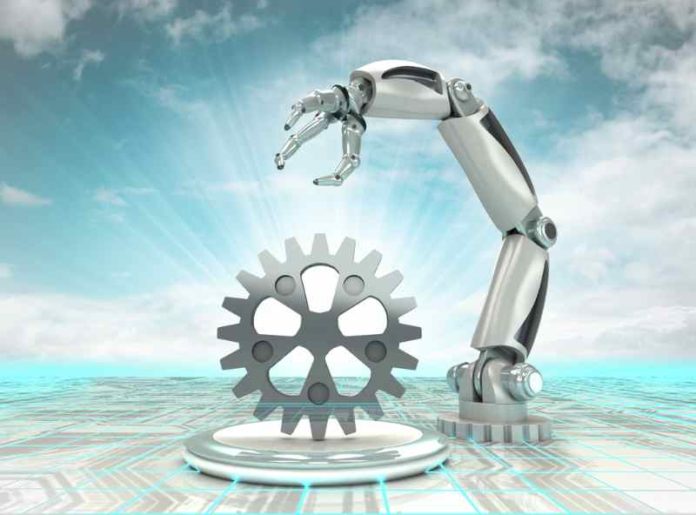By Megan R. Nichols
Robots and automated machinery have always been expensive, sometimes to the point where they are out of reach of certain businesses. However, advancements in technology have made them much more accessible today. This is incredibly beneficial to the food services, assembly, manufacturing and construction industries— all fields where robotics can have a significant impact on output.
It’s now possible for even startup businesses to add a few robots to their repertoire. More surprisingly, small to medium-sized operations don’t have to buy the equipment outright. Instead, there’s the option to hire a third-party service to supply the necessary equipment. This setup is called robots-as-a-service. Like anything that’s service-based, it takes a lot of responsibility off the business and shifts it to the third-party provider.
That means the company renting the equipment receives all the benefits afforded by the upgraded technology, with few of the hassles. Since the industrial robotics market is expected to grow by as much as 175 percent over the next decade, the hassle-free option afforded by RaaS is important.
What Is Robots-as-a-Service?
Robots-as-a-service and robots in the cloud are two similar, yet remarkably different approaches to the service-based model.
Cloud robots or robots in the cloud rely on internet-connected robotics that tap into cloud-based and pay-as-you-go services. A manufacturer, for instance, could install a small army of robots in its plant that tap into computational and big data storage systems hosted off-site. Those services are often provided by and managed by a third-party.
Robots-as-a-service, on the other hand, is a business model where the equipment is rented out to a company, either on a monthly, quarterly or annual basis. Also, everything related to those systems is included, such as technical support, real-time data monitoring, cloud storage and analytics, and much more.
What makes RaaS so lucrative is that the equipment is there physically to use in operations, yet the maintenance, optimization and technical upgrades are all handled remotely by a provider. The business using the technology doesn’t have to do anything extra — it simply gains access to the robotics and hardware.
Take a pneumatic robot arm, for instance. The operational system is quite complex, with five different components working to keep the arm active. A compressor provides the pressure and force, a reservoir stores the air, several valves control the flow, a circuit is used to manage the valves and components, and an actuator converts the air into action. Any one of those points could experience failure, which means maintenance crews have to sort through the entire machine to find what’s wrong. Then there’s an incredibly involved process to fix or maintain the equipment.
If that pneumatic arm is offered by a service provider, none of that matters. The business using it only needs to worry about whether it’s working or not. When it’s not working it can call the provider, who will either replace the unit or fix it when applicable.
Why the Model Is So Beneficial for Small Business
The value in robots-as-a-service is immediately apparent, especially for small to medium-sized operations with limited resources.
For starters, the necessary hardware to keep a robot operational is often incredibly expensive. It’s also generally challenging to set up initially, and just as difficult to optimize and maintain over time. This means any robotics-based operation needs the appropriate human labor and experience to back it up. That, in and of itself, is just as expensive. Labor costs these days are not cheap, more so when you need an experienced specialist.
Then there’s the regular usage to contend with. Over time, the system is going to decrease in productivity due to normal wear and tear. Changes and upgrades may need to be set up and configured if the business changes course or produces new goods.
Finally, these systems require additional hardware, network support and technical gear to back them up. Again, laborers need to maintain the appropriate networks and tools. A maintenance crew must remain on-call to respond to problems or errors.
Almost all this can be eliminated simply by subscribing to a robots-as-a-service platform. The service provider is responsible for handling most of the necessary components, systems and labor requirements, not the business in question.
According to Deutsche Bank, Amazon’s collaborative robots have reduced operating expenses for the company by 20 percent. It’s also saved as much as $22 million in fulfillment costs every time it opens a new warehouse.
Imagine those same savings applied to a small business or medium-sized operation, minus the associated costs of implementing and maintaining a robot army. Robots-as-a-service is the wave of the future — and the future is here.
Megan R. Nichols is a technical writer and the editor of Schooled By Science. She regularly contributes to sites like Industry Today, Born2Invest, and Business Process Incubator. Follow Megan on Twitter @nicholsrmegan and subscribe to her blog to stay in touch.
Robots stock photo by Adam Vilimek/Shutterstock







